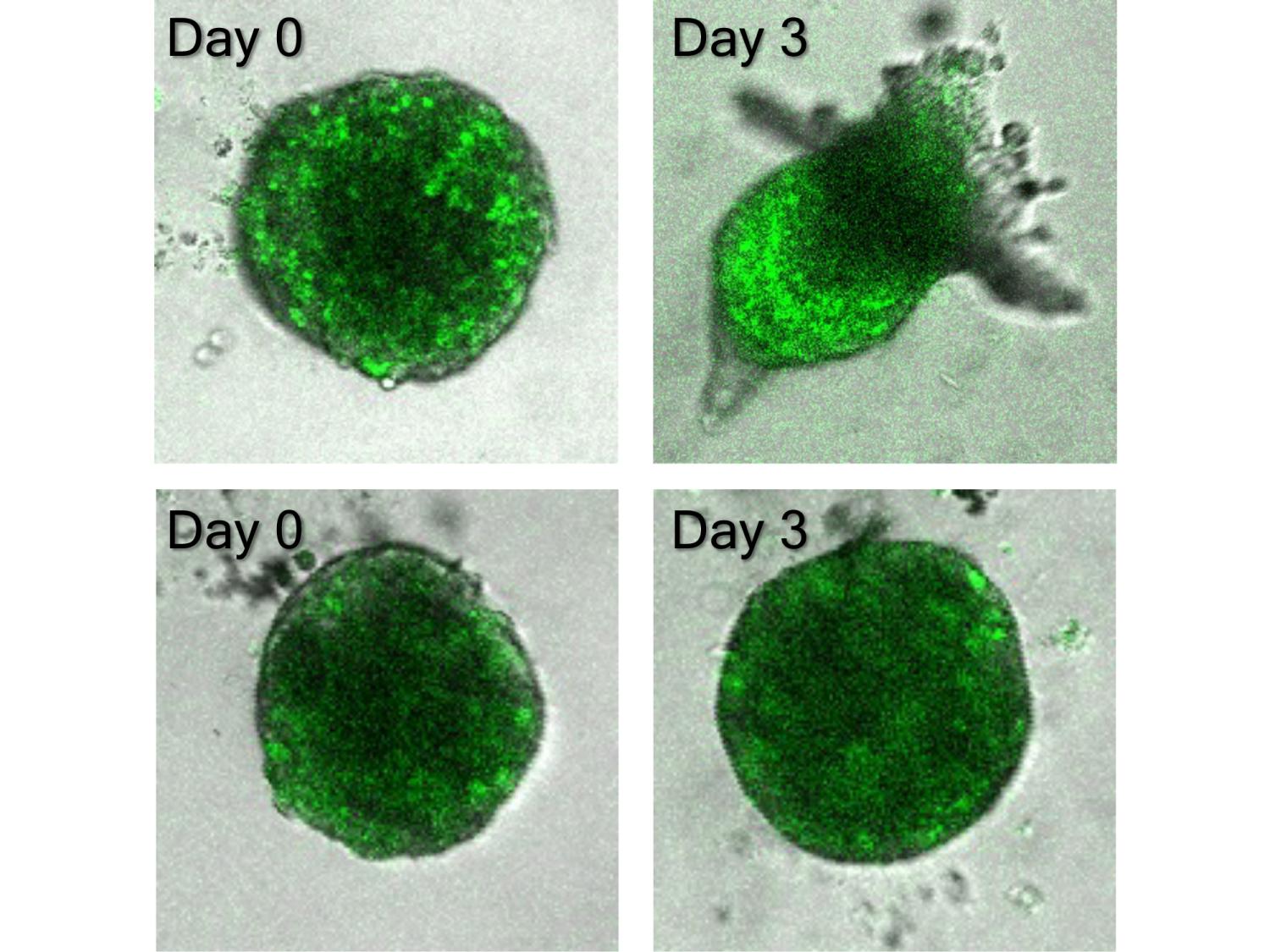2023-06-26 カリフォルニア大学サンディエゴ校(UCSD)
◆現在、NASHの治療にはFDA承認の薬物がないため、この発見は患者にとって非常に有望です。さらなる研究が行われ、この薬物の安全性が確認されれば、NASH患者に新しい治療法が提供される可能性があります。
<関連情報>
- https://today.ucsd.edu/story/study-potential-new-treatment-identified-for-liver-disease
- https://www.nejm.org/doi/full/10.1056/NEJMoa2304286
NASHにおけるFGF21アナログPegozaferminのランダム化比較試験 Randomized, Controlled Trial of the FGF21 Analogue Pegozafermin in NASH
Rohit Loomba,Arun J. Sanyal,Kris V. Kowdley,Deepak L. Bhatt,Naim Alkhouri, Juan P. Frias, Pierre Bedossa,Stephen A. Harrison,Donald Lazas,Robert Barish,Mildred D. Gottwald,Shibao Feng,Germaine D. Agollah,Cynthia L. Hartsfield,Hank Mansbach,Maya Margalit, and Manal F. Abdelmalek
The New England Journal of Medicine Published:June 24, 2023
DOI: 10.1056/NEJMoa2304286
Abstract
BACKGROUND
Pegozafermin is a long-acting glycopegylated (pegylated with the use of site-specific glycosyltransferases) fibroblast growth factor 21 (FGF21) analogue in development for the treatment of nonalcoholic steatohepatitis (NASH) and severe hypertriglyceridemia. The efficacy and safety of pegozafermin in patients with biopsy-proven noncirrhotic NASH are not well established.
METHODS
In this phase 2b, multicenter, double-blind, 24-week, randomized, placebo-controlled trial, we randomly assigned patients with biopsy-confirmed NASH and stage F2 or F3 (moderate or severe) fibrosis to receive subcutaneous pegozafermin at a dose of 15 mg or 30 mg weekly or 44 mg once every 2 weeks or placebo weekly or every 2 weeks. The two primary end points were an improvement in fibrosis (defined as reduction by ≥1 stage, on a scale from 0 to 4, with higher stages indicating greater severity), with no worsening of NASH, at 24 weeks and NASH resolution without worsening of fibrosis at 24 weeks. Safety was also assessed.
RESULTS
Among the 222 patients who underwent randomization, 219 received pegozafermin or placebo. The percentage of patients who met the criteria for fibrosis improvement was 7% in the pooled placebo group, 22% in the 15-mg pegozafermin group (difference vs. placebo, 14 percentage points; 95% confidence interval [CI], -9 to 38), 26% in the 30-mg pegozafermin group (difference, 19 percentage points; 95% CI, 5 to 32; P=0.009), and 27% in the 44-mg pegozafermin group (difference, 20 percentage points; 95% CI, 5 to 35; P=0.008). The percentage of patients who met the criteria for NASH resolution was 2% in the placebo group, 37% in the 15-mg pegozafermin group (difference vs. placebo, 35 percentage points; 95% CI, 10 to 59), 23% in the 30-mg pegozafermin group (difference, 21 percentage points; 95% CI, 9 to 33), and 26% in the 44-mg pegozafermin group (difference, 24 percentage points; 95% CI, 10 to 37). The most common adverse events associated with pegozafermin therapy were nausea and diarrhea.
CONCLUSIONS
In this phase 2b trial, treatment with pegozafermin led to improvements in fibrosis. These results support the advancement of pegozafermin into phase 3 development. (Funded by 89bio; ENLIVEN ClinicalTrials.gov number, NCT04929483. opens in new tab.)



